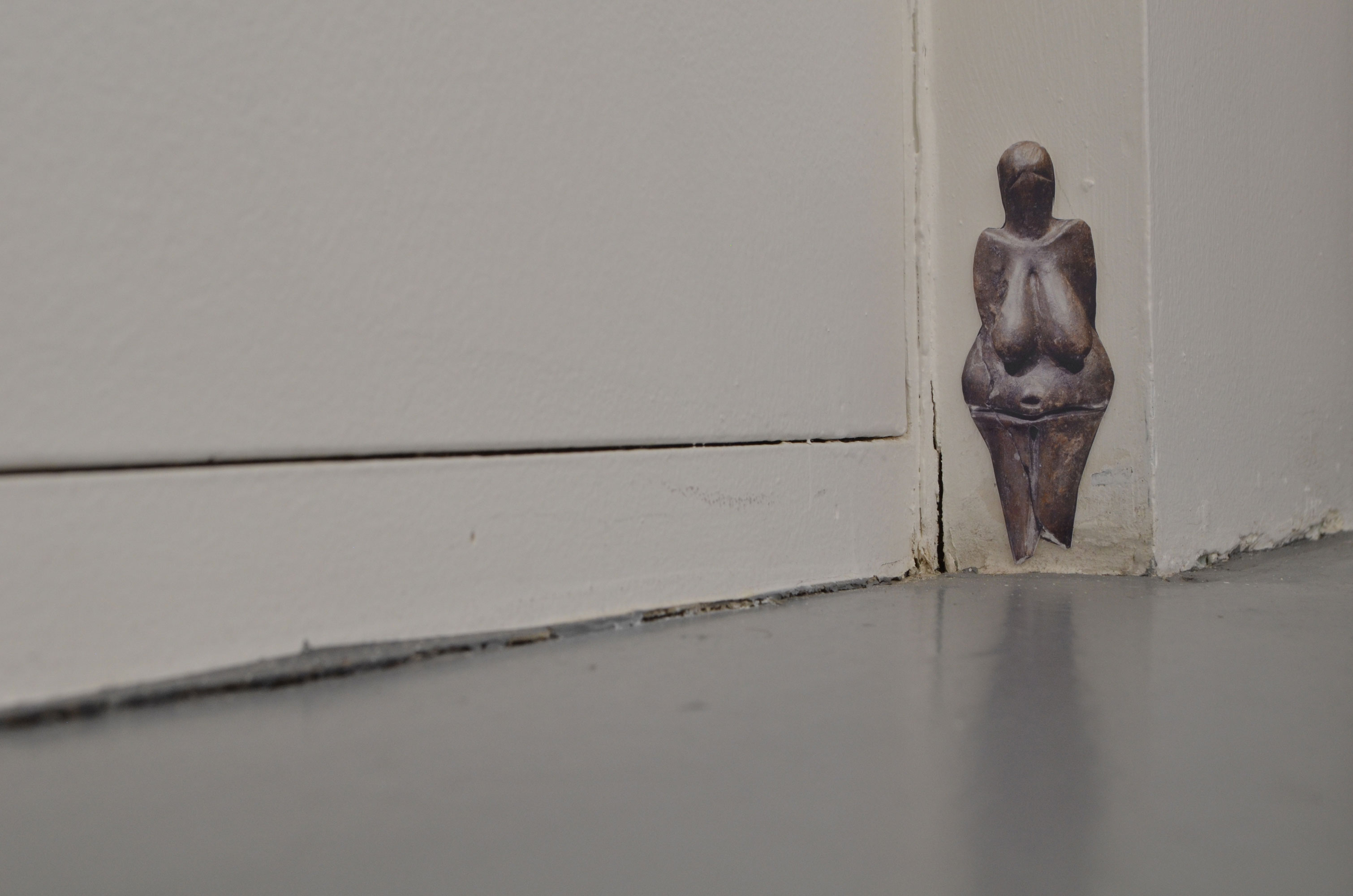INGRID BERTHON-MOINE
You Tear Us
30.06.18–12.08.18













As depositories of our shared histories, caves have become spaces contaminated with the marks of our pasts; symbols as shorthand for important stories or memories. Upon entering, we step back into time as history envelops us; we unearth visual markers of what came before and may be confronted by jarring depictions of ourselves.
In You Tear Us, Ingrid Berthon-Moine invites us to descend the tight and claustrophobic stairs leading towards a cave of her own making. This place speaks not just of the past but of the body; its shape and narrowness morphs it into a womb-like space of human scale, unearthed by a matrix of drops, drips and bodily shapes proposing a fluid paradise. Upon entering, we are assaulted by colourful and joyous male and female shapes full of liquidity, milky breasts, leaky dicks, wet limps, hairy balls and furry vulvas. These organic markings are as a living shell that palpitates, breathes, squirts and flows, whilst opaque and translucent barriers create a cavernous maze, guiding the viewer through the cavity. This metaphorical female cavity is a space of anatomic perfection that pulls apart the male body, dissecting it into fleshy gestures stripped of their power and exposure. It brings to mind Luce Irigaray’s critique of Plato’s Cave, outlined in her chapter Plato’s Hystera (Speculum of a Lost Woman, 1974). With Plato’s cave having become the basis of Western philosophy, Irigaray’s critique on Plato’s concept of truth is simultaneously a critique towards the Western phallogocentric philosophy and the many ways in which Western thought has excluded women.
For Plato, the cave was oriented towards its opening - towards the light, i.e., the truth. The man who escaped from the shackles and made it outside became a metaphor for achieving the truth, whereas the prisoners who stayed behind remained ignorant. But, as Irigaray sees it, this journey outside always assumes “the leap from a worse to a better” (p247). Instead, she argues that the cave offers its own account of truth, one that threatens the logic of the sun (‘difference’) and chooses to read the cave as “a metaphor of the inner space, of the den, the womb or hystera*…” (p243)
Back in Berthon-Moine’s cave, we have returned to a womb of poetic and harmonious compositions. The artist’s rejection of the hetero-normative, gendered body allows us to question its representation within the tradition of Western Art History. In this light, the installation proposes a lost paradise, one where we all felt comfortable and secure.
*Ancient Greek for womb
Ingrid Berthon-Moine is an artist working across sculpture, photography and installation that addresses concerns around the representation of gender relations and gender narratives through her practice. She obtained her MFA in Fine Art from Goldsmiths College, London (2017) and her MA Photography from London College of Communication, London (2009). Recent exhibitions include Solitudes Molles Sous La Lumière Bleue, Espace Témoin, Geneva; We All Have a Problem With Representation, The Showroom, London; No Lifeguard on Duty, Westwerk, Hamburg; Feminist Practice in Dialogue, ICA, London. Ingrid Berthon-Moine has also delivered lectures and talks at ICA, The Photographers Gallery and The Courtauld Institute. Her work is included in the collection of The British Museum, Birth Rites Collection and Private Collections.
www.ingridberthonmoine.com
www.ingridberthonmoine.com